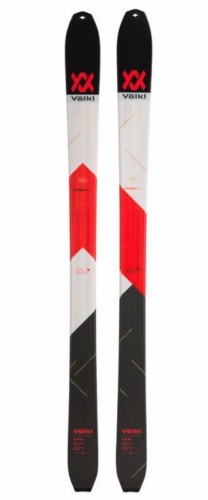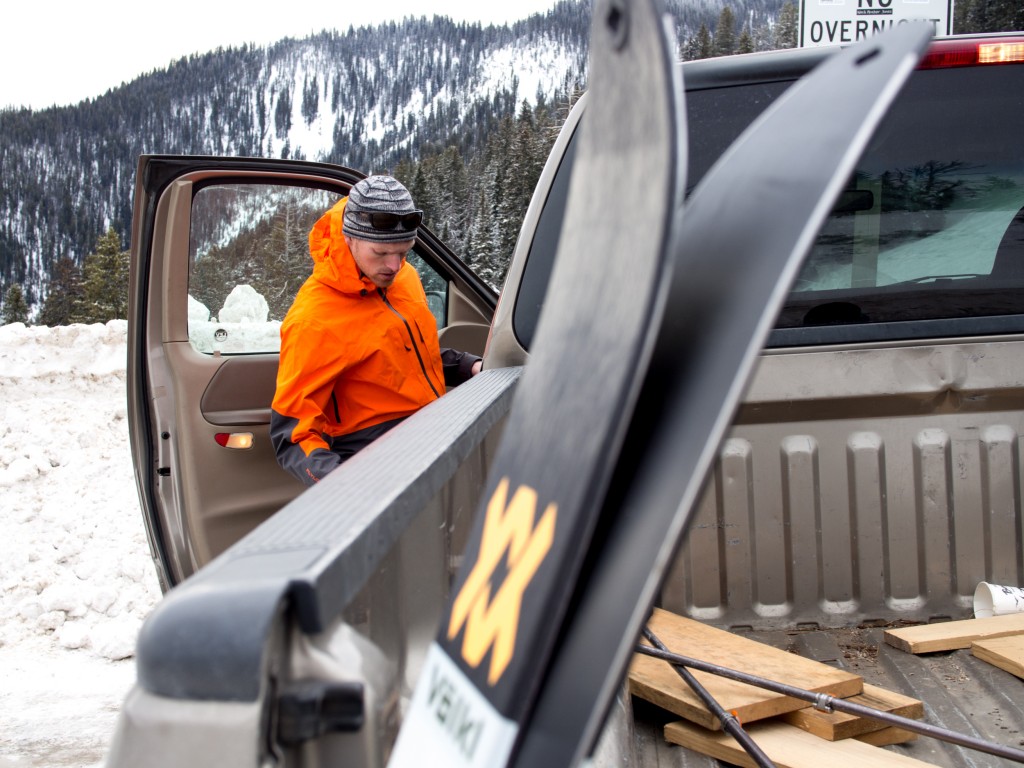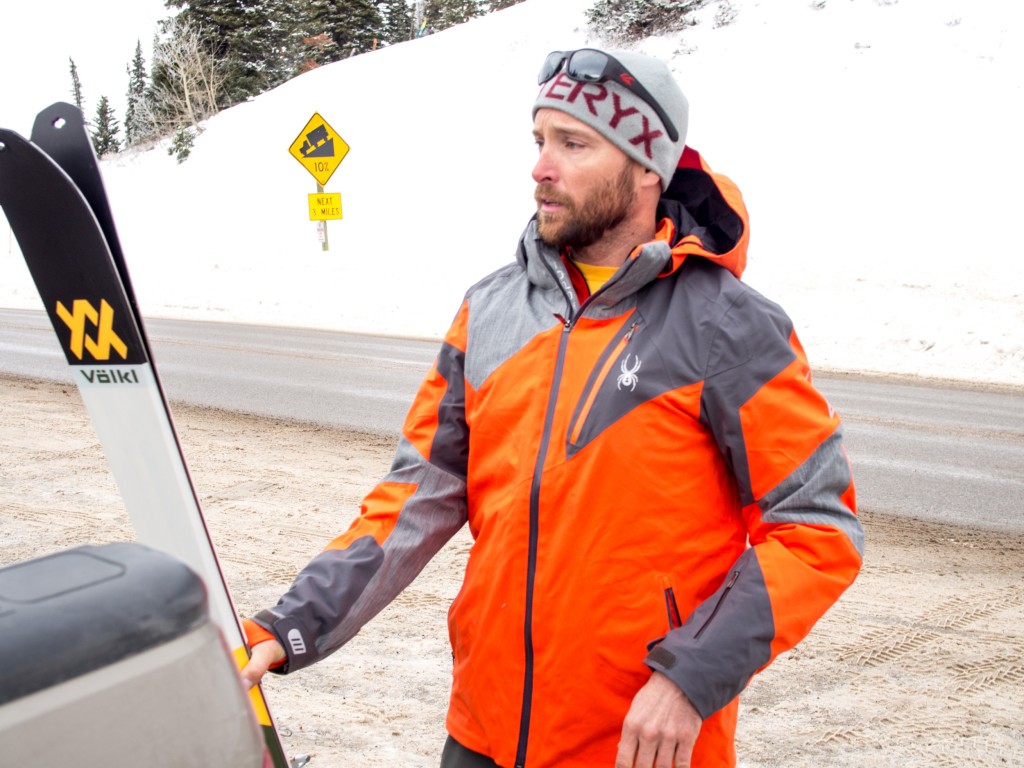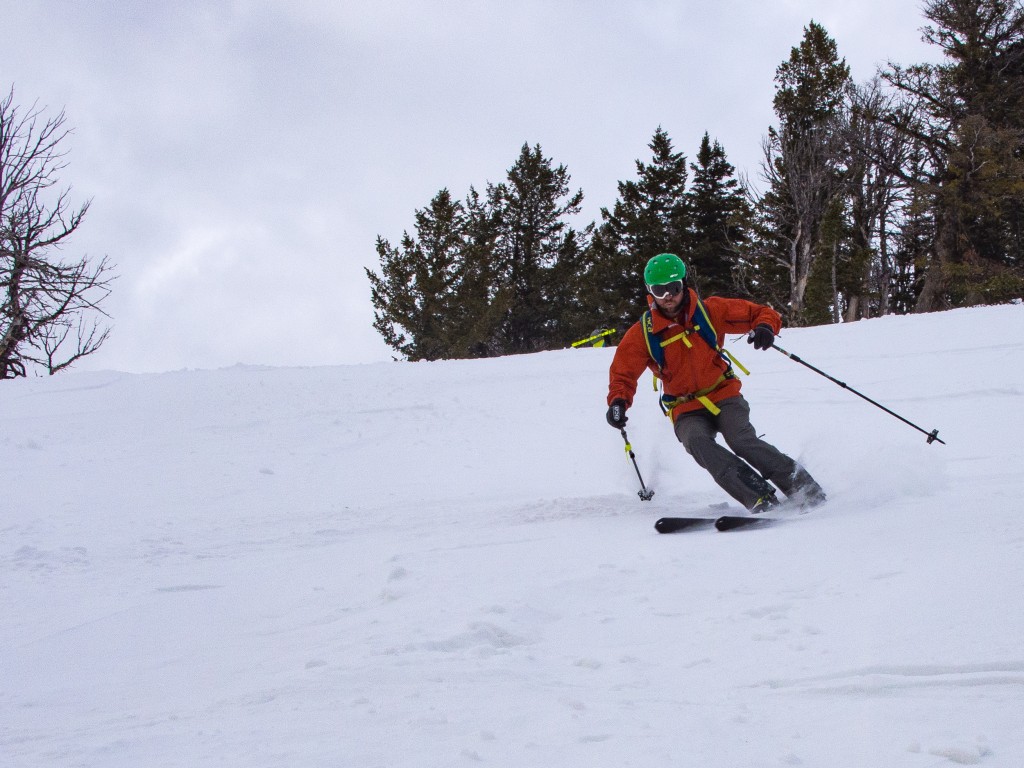The Volkl VTA 98 is, in terms of dimensions and weight, what we consider to be the perfect all-around backcountry ski. As you envision your skiing, be careful to separate what you aspire to from what you actually do. We all envision ourselves skiing like Chris Benchetler, finding only perfect powder, or climbing like a rando racer. However, the reality is definitely something in between. BC ski reality is variable snow, metered downhill travel pace, and about 4000 vertical feet of gain in a day. For this fantastic median day, the VTA is your tool. Step outside of that reality, and, of course, your equipment needs will change. Here in the typical setting, though, we highly recommend the VTA. All of our skis are selected and tested with this typical ski regimen in mind. Our testers, though, are well versed in outlier situations, as well.
We know the difference, and we dig the VTA. We have no reservations in recommending the VTA for all backcountry skiing pursuits. It might be trendier to go bigger, and it might be tempting to go lighter, but nothing nails the sweet spot like the VTA. If you are 100% confident that you are truly an "outlier" in your backcountry skiing, feel free to examine more specialized tools. Those truly skiing the backcountry like a movie star will want something stiffer. Those who can actually count on skiing only powder can get away with something lighter. If your aspirations are huge volume on giant peaks, rando-race style skis are preferred. However, if you'll ski normal days on the Haute Route, Teton Pass, Valdez, Tahoe, or the Icefields Parkway, the VTA is for you.Volkl VTA 98 Review
Our Verdict
Our Analysis and Test Results
Volkl makes great skis. Period. We work hard to guard against bias; however, with decades now of riding backcountry-specific skis, our test team has a hard time overlooking the clear advantage that long-time ski manufacturers have in this relatively newly exploded category. Backcountry skis from ski companies readily rise above those offered by companies that started out making shovels or climbing gear or touring bindings. The Volkl VTA is among the best skis we've ever used for all-around, human-powered skiing. Pair it with light bindings and mid-weight touring boots, and this could be all you need for everything from super deep days at Rogers Pass to skiing off the top of the Grand Teton.
Performance Comparison
Weight
In most categories of equipment we assess at OGL, weight is an easy one. Outdoor activities are generally human-powered, and working against gravity. The lighter your equipment, the better; provided, of course, that performance doesn't suffer. Durability declines and price increases as you reduce weight, but performance in most cases can stay steady. With skis, it is not as simple. On the uphill, of course, lightweight is king. The lighter, the better. With regards to downhill performance, however, examining weight is a little trickier.
A graph charting downhill performance and weight would have a bell shape. Too heavy is undesirable, but so is too light. There is a sweet spot. No matter how well engineered a ski is, the ski's mass is crucial to certain aspects of downhill performance, and the weight contributes directly to performance. A tent or a ski boot or climbing rope, when each is made to function appropriately at ultralight weights, is only better if you make it lighter. Skis do not work this way.
Weight is a drawback on the way up, and a direct benefit on the way down. There is an ideal weight for downhill skiing, while the ideal for uphill is basically zero. The so-called "sweet spot". Make a ski for touring, and that sweet spot shifts a little, given uphill considerations. In short, the VTA seems to nail this sweet spot; Volkl entered the backcountry market years ago with a ski in this weight realm (about 1400g per ski) and continues to refine their offering right here at what we agree to be the ideal weight for all-around backcountry skiing.
There are lighter skis, and heavier skis, but the best overall skis are right around this weight.
Stability at Speed
It is in this category that higher weight is most valuable. For avoiding deflection and pushing through obstacles, a ski with greater mass is going to perform better. Of course, there are other manufacturing variables. Materials, shape, and construction techniques optimize longitudinal flex pattern and minimize torsional flex. A ski that doesn't flex torsionally (picture wringing out a towel, that is applying torsion to the towel) stays more stable. Volkl's materials and construction optimize torsional rigidity; for example, the tip is stiff and charges right through obstructions.
Further assisting in stability, we tested a relatively long version of this ski. Our average size lead tester rode the longest VTA 98 that Volkl makes. Longer skis are more stable at speed. If you are even bigger than Jed (5'10" and 165#), the 184cm model will feel a little small. We wish, for the sake of larger skiers, that the VTA was available in even longer sizes. Of course, longer skis are heavier, slower to turn, and more to manage in steep terrain. Regardless of the length discussion, the VTA is great at speed and in the steeps.
The relatively traditional shape (cambered, early rise tip, moderate side-cut) makes for a long "running surface" that lends excellent stability. The tip stiffness and fine-tuned weight blast through irregularities. Only the beefier, heavier skis are more stable at speed than the VTA. Otherwise, the Volkl VTA 98 gave our testing team stability that was laudable. The super light products are clearly more wandery. Even skis that are near the same weight as the VTA don't have the same rock-solid footing of the Volkl.
Firm Snow Performance
Firm snow is a minor weakness of the VTA 98. In a "normal" Teton early season, it is difficult to find firm snow in the backcountry for testing. In the past, we've had to go to the ski resort for firm snow testing. However, recent seasons have been strange, to say the least. In the Tetons recently, we had an early season snowpack that includes ice crusts and persistent avalanche problems. We don't normally have this. What this meant, especially for head ski tester and ski touring guide Jed Porter, is that he had to get creative to deliver client rewards. One day they skied the bed surface of an avalanche path.
This bed surface was steep and consisted of a rain crust; it was more akin to April big mountain ski mountaineering than December conditions. On this run, Jed had ample opportunity to test the firm snow performance of the VTA. Disregarding the emotional discomfort of skiing, ice during December, the VTA was a little disappointing. For this sidecut and pedigree, we'd expect tenacious grip and easy moves. The VTA was "hooky" in the tip, requiring significant adjustment. Once adjusted, of course, he coped. But it was a startling realization. It is a concern, but careful tuning and selection of a shorter size will mitigate this issue. For steep ski mountaineering, shorter sizes are better, regardless. Shorter skis hook like this less.
Jed's steep and firm December anecdote also points to the importance of stepping outside the "all pow, all the time" aspirations. Being able, and equipped, to ski tougher snow can get one out, help one avoid specific hazards, and enable exploration of different places and conditions.
Powder Snow Performance
These are fast-flying, pow-surfing tools. For such a "narrow" waist width, they ski soft and deep very well. If powder is your focus (and by focus, we mean that you can actually ski powder more than half the time, given your terrain and usage patterns. All of us want powder all the time, but none of us can get it all the time), size your VTA skis long and enjoy a killer balance of uphill efficiency to downhill sending. We skied numerous super long powder days on the VTA with light bindings and glorified rando race boots (Top Pick Scarpa Alien RS).
This combination is strange to look at (a mismatch of ski size and boot beef) but is a total hoot. For ticking off more human-powered vert than some resort skiers get in a day, and having fun doing it, light gear is king. All skis are good in powder. Lighter skis get you more of it for the same uphill output. Again, the VTA's low uphill weight is a powder skiing attribute. Less weight equals more skiing; more powder skiing is better powder skiing.
Crud/Poor Snow Performance
This is the scoring metric that ski testers like best. Not because we like skiing poor snow, but that it is here that skis stratify. Any modern ski rides powder well, and an attentive, balanced skier can edge any tool on rock-hard snow. It is breakable crust, and week-old tracks and icy luge runs that demand tailored performance. The VTA has a sophisticated combination of construction and materials that make it excel at poor snow.
Given all the variables in ski design, we hesitate to attribute performance to any one or even two construction elements. With the VTA, no one dimension or construction element suggests it will be great in poor snow. It isn't heavily rockered, super wide, nor does it have a trendy reverse sidecut at the tip. Somehow, though, it combines some carbon construction, longitudinally forgiving flex, and just the right geometry to make for very gentle poor snow performance.
Value
Herein lies our most significant reservation with the VTA. These are expensive skis.
Conclusion
This ski is exactly what 90% of the backcountry ski population should be using. Others come close, and brand loyalties will come into play. But if you get a chance to try 'em out, we're 100% confident you'll dig the VTA 98.











